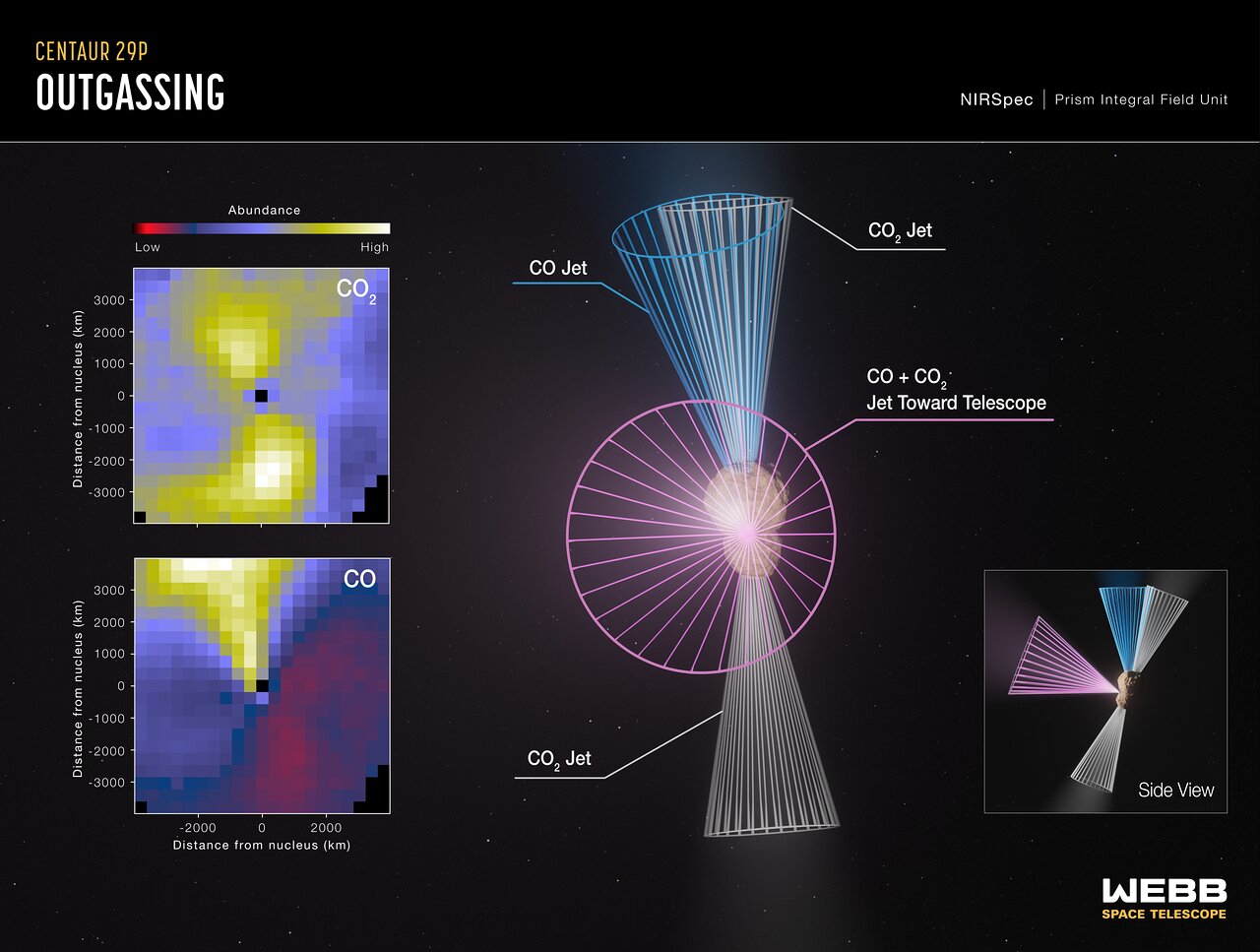Centaur 29P Outgassing (NIRSpec)
The NASA/ESA/CSA James Webb Space Telescope observed Centaur 29P/Schwassmann-Wachmann 1, one of the most active objects in the outer solar system. Centaurs are “hybrid” objects in the sense that they share characteristics with trans-Neptunian objects from the Kuiper Belt reservoir and short-period comets.
A team of scientists used Webb’s NIRSpec (Near-Infrared Spectrograph) instrument to study Centaur 29P. While data from previous radio-wavelength observations of Centaur 29P showed a carbon monoxide (CO) gas jet pointed toward Earth, Webb parsed the jet’s composition in greater detail, and also detected multiple never-before-seen features of the centaur: two jets of carbon dioxide (CO2) emanating in the north and south directions, and another jet of CO pointing toward the north.
Centaur 29P’s different CO and CO2 abundances suggest that the body may be composed of different pieces that coalesced together during its formation. However, other scenarios to explain Centaur 29P’s outgassing activity are still being considered.
Credit:NASA, ESA, CSA, L. Hustak (STScI), S. Faggi (NASA-GSFC, American University)
About the Image
| Id: | centaur29p | |
|---|---|---|
| Type: | Chart | |
| Release date: | 2 October 2024, 16:00 | |
| Size: | 16001 x 12085 px | |


